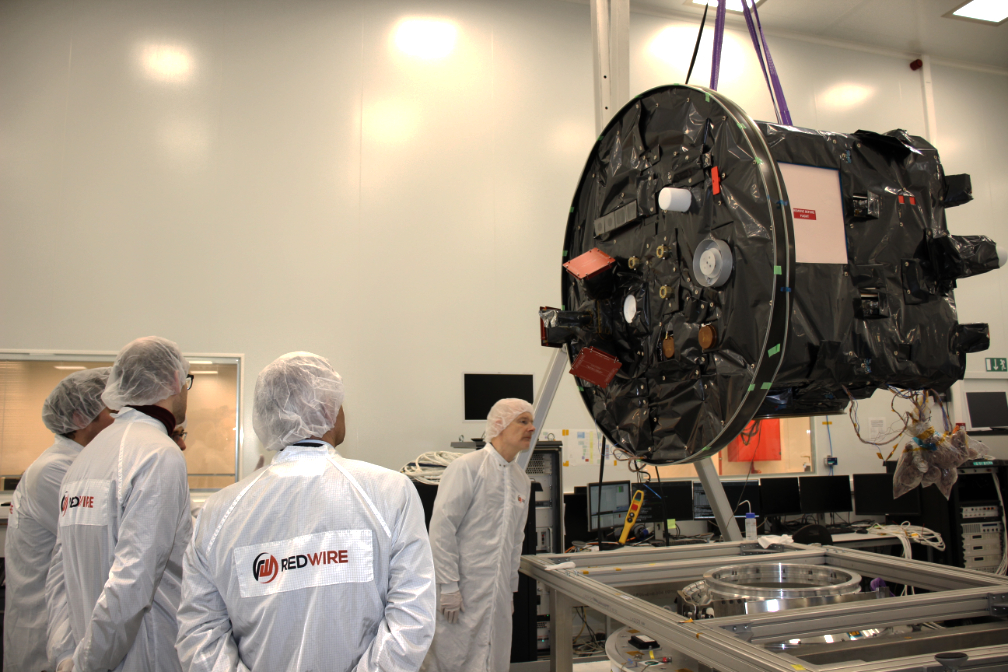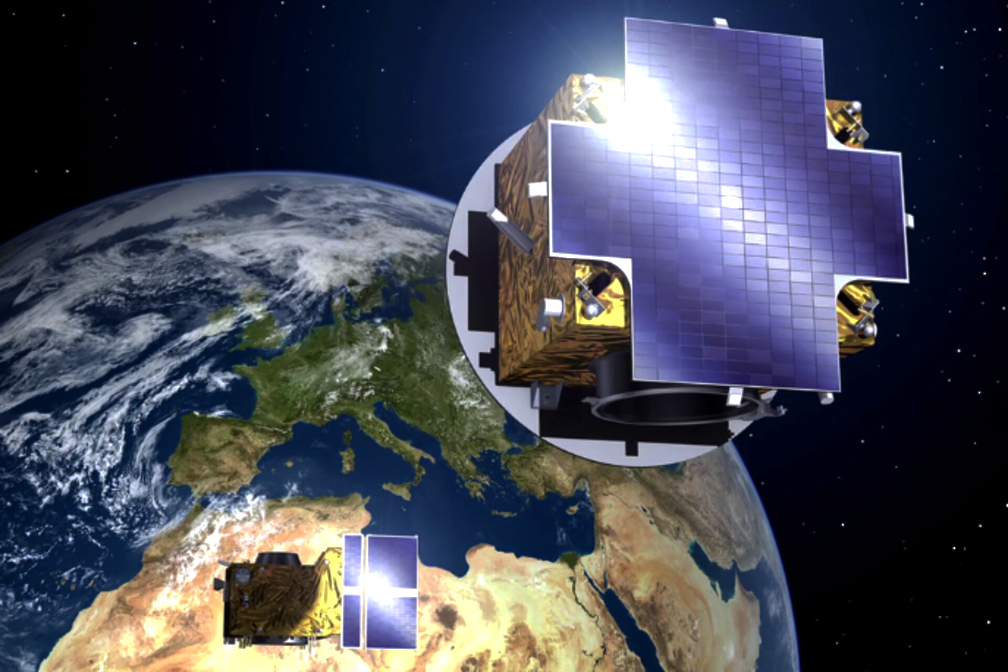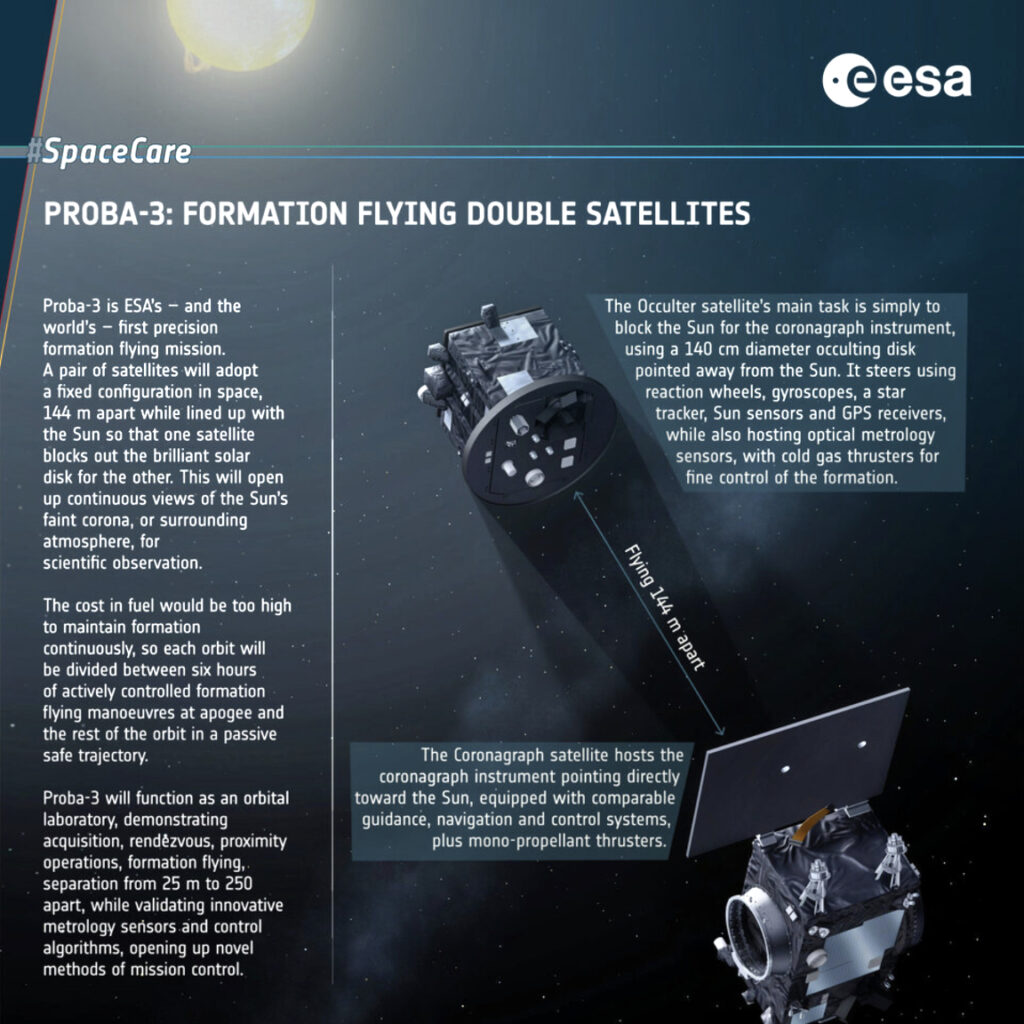
The two spacecraft that comprise ESA’s Proba-3 mission for precise formation flying in orbit are now complete — all of the instruments and sensors that allow the satellites to maneuver to millimeter scale precision relative to one another have been integrated and the pair are fully wrapped in multi-layer insulation, ready to be tested in simulated space conditions.

While Proba-3 is a technology-testing mission, its main payload is a science instrument focused on the Sun which will produce unique data. During the observation phase of their orbits, the pair will form a straight line in space, with the Sun exactly 144 m from each other so that the ‘Occulter’ spacecraft – equipped with a round disk – will cast a shadow onto the second ‘Coronagraph’ spacecraft. By doing so the Occulter will block out the brilliant solar disk to allow the Coronagraph to image the wispy outer atmosphere of the Sun, known as its corona, for up to six hours at a time.

On Earth, the corona is visible only for a few moments during rare solar eclipses, but the availability of sustained observation should address many mysteries of the solar corona – including why it is a million degrees C hotter than the surface of the Sun that it radiates from.

Sustained observations will only be made possible by the spacecraft entering formation for a sustained period of time, enabled in turn by an onboard suite of guidance and control methods, including satellite navigation receivers, radio inter-satellite links, lasers and optical cameras.

The satellite pair will fly on a highly elongated (or ‘elliptical’) 19-1/2 hour orbit that will see them venture a maximum 6 0530 km away from Earth – performing observations at the top of each orbit to minimize gravitational and illumination effects from our planet. For the rest of their orbit, they will be free flying with respect to one another.
Next month, the spacecraft will be shipped to IABG in Germany for the start of a four-month environmental test campaign, simulating every aspect of the launch and space environments. Proba-3 is due to be flown by PSLV launcher from India next year.
Proba-3 has contributions from across Europe, but its main coronagraph instrument comes from Belgium’s Centre Spatial de Liège, CSL, and its satellites have been integrated here at Redwire Space. The satellite platforms meanwhile were designed by Airbus Defence and Space in Spain while Spain’s SENER company serves as prime contractor. So these two countries are very much in the lead for the mission, and this visit gave a chance for their delegations to see this milestone for themselves. The latter will be guided by light emitting displays placed on the face of both spacecraft for the other to see. In fact one of the reasons the spacecraft’s multi-layer insulation is black is to ensure maximum contrast with the onboard LEDs so the cameras can observe them clearly.”
ESA’s Proba-3 mission manager Damien Galano
Ground and space observatories often incorporate Sun-blocking coronagraphs – the ESA-NASA SOHO spacecraft is one famous example – but their effectiveness is limited by light spilling around disk edges, a phenomenon called diffraction. By hosting our coronagraph on a separate spacecraft we reduce diffraction and increase overall visibility of the Sun’s surroundings. And looking closely at the Occulter’s edge shows it has been precisely curved to reduce diffraction effects still further.”
Jorg Versluys, payload system engineer

